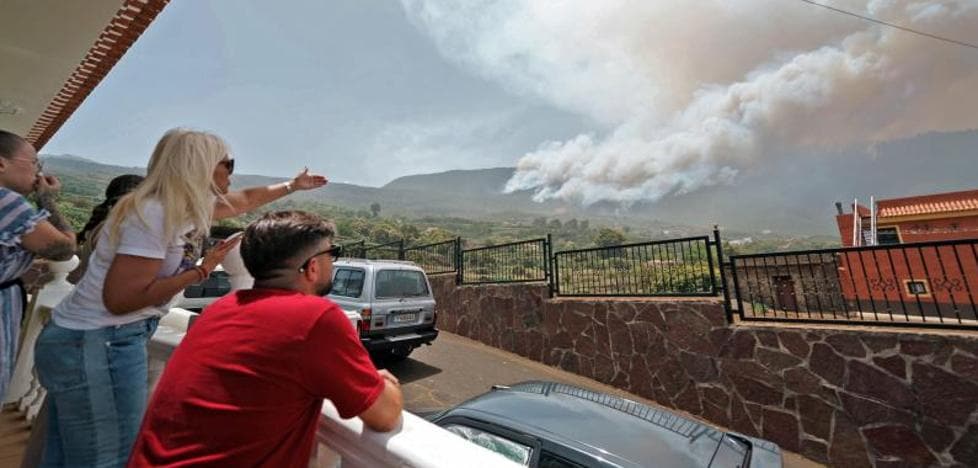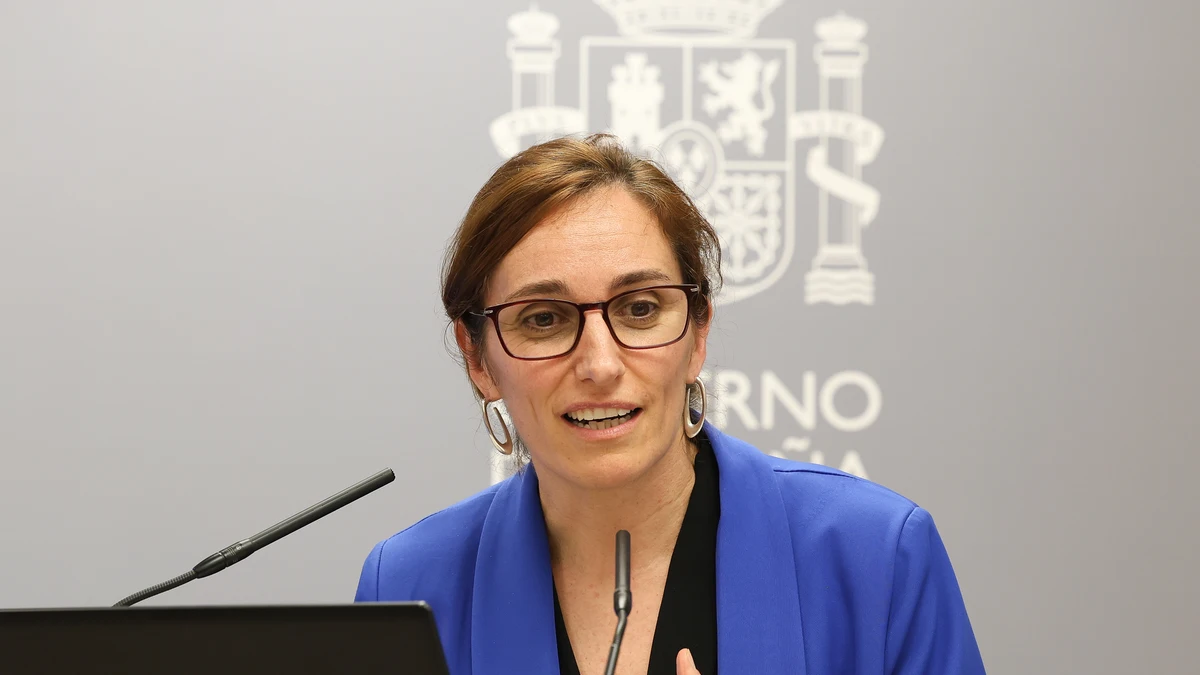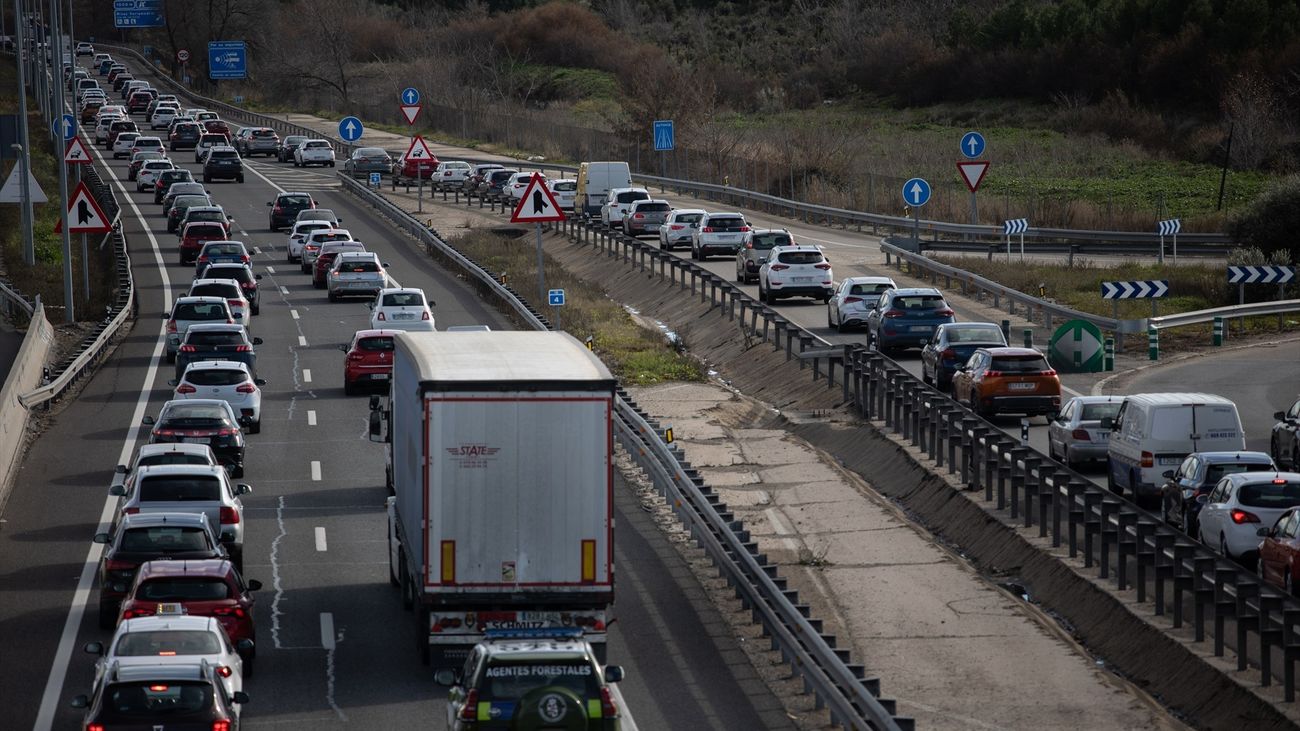Climate change and abandonment of the countryside, a lethal cocktail

Residents of the neighborhood of Las Llanadas, in the Tenerife municipality of Los Realejos, observe the fire that affects the north of the island. /
The only possibility of stopping megafires is to focus the strategy on prevention and on rescuing good management of the forest
On July 17, in the middle of the afternoon, a storm set fire to the outskirts of Losacio and unleashed the greatest inferno in memory on the peninsula in this small Zamora village of emptied Spain. Lightning from a storm set the saw on fire. The dry undergrowth, the 40 degree temperature indicated by the thermometer and a Saharan wind did the rest. It wasn't fire, it was one explosion after another. The flames advanced with brutal speed. In the first 60 minutes, some 1,500 hectares burned. Three hours later there were 10,000. No one could do anything for days to stop that fire monster.
It is an example of a megafire book, the new generation claims. A runaway and explosive forest fire, with an enormous heat output and dizzying speed of spread, which in a matter of minutes exceeds the capacity of the extinguishing devices and which cannot be controlled normally for many days.
It is the prototype of extreme fire that we will see more and more in Spain. Not only does it imply the existence of a certain ecological disaster, but it also includes a colossal damage bill and entails, as occurred in the Zamora mountains, a high risk of causing fatalities. The trend is that there are fewer and fewer forest fires, including those of a significant size, but, on the contrary, extreme fires are repeated more frequently.
"Powder keg"
Why do the fires multiply that exceed firefighters, brigade members and aerial means? Because of the heat waves and droughts caused by the increasingly evident climate change and because the forests are "a powder keg", summarize the WWF experts. Heat waves are three times more frequent in Spain than 45 years ago and last three times. Forest land, for its part, is full of undergrowth and dry bushes due to the abandonment of the rural world and the high efficiency of firefighters, who even put out small forest fires that clean the groves, explains Lourdes Hernández, an expert from the NGO . They are authentic woodsheds overflowing with natural fuel. With scorching temperatures and favorable winds, they spread flames three times faster than was customary in the past, amplifying their heat virulence and cupfire until they are unstoppable.
The threat of megafires, they are convinced, cannot be reduced with firefighters and brigade members alone, no matter how many means and personnel they receive. Spain already has one of the best forest firefighting devices in the world, but technicians believe that the effectiveness of this equipment is reaching its limit
The only possibility to curb the fire monsters, naturalists and institutional leaders agree, is prevention based on the territory itself. Reconfigure forest and mountain areas to minimize the biofuel they store and to act as firebreaks from uncontrolled fires. "The fires begin to go out in winter," admits Leonardo Marcos, general director of Civil Protection. The head of the state device is clear that he urges to make "a more far-reaching reflection, which puts above all the emphasis on prevention."
The fire of Tenerife reaches the Teide National Park
The fire that spread last Thursday in the municipality of Los Realejos (in the north of the Canary Island of Tenerife) entered the Teide National Park late on Friday afternoon, the largest and oldest of the natural spaces from the Canary Islands The emergency services explained yesterday that the situation "worsened overnight with progress on different fronts." The area affected is around 2,000 hectares, with a perimeter of about 20 kilometers, according to the Security Minister, Julio Pérez.












